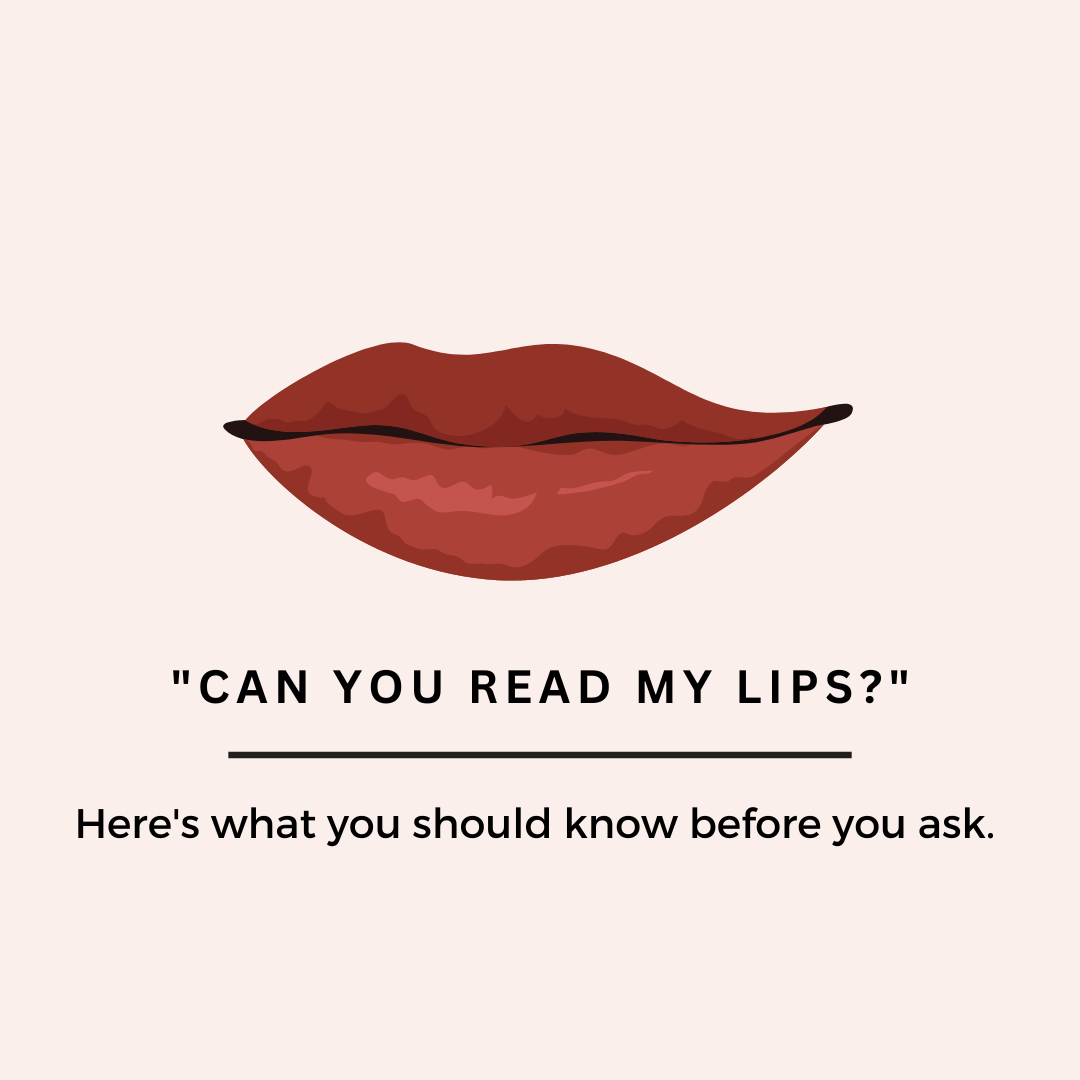Lip reading is a communication technique in which a person who does not have full access to sound closely watches the mouth of a speaker to understand speech. It is a skill which requires practice and, sometimes, formal training.
In an essay, “Seeing at the Speed of Sound,” Rachel Kolb describes lip reading as “a skill of trying to grasp with one sense the information that was intended for another,” calling it “inherently tenuous.” View the visual adaptation of the essay here.
Not every d/Deaf and hard-of-hearing person is able to and willing to read lips, but if you find yourself in conversation with a person who is reading yours, here are ten things you should know:
- Only about 40% of sounds in the English language can be read on the lips. Lip reading is a communication technique that works best when combined with residual hearing or another communication tool such as cued speech or assistive hearing devices. On its own, lip reading does not give full language access–even to the world’s best lip readers.
- The following sounds are visually indistinguishable from each other, meaning a lip reader cannot tell the difference by sight alone:
- B and P
- M, N, and NG
- W and R
- TH and T
- CH and J
- Lip readers rely heavily on context. A native English speaker anticipates common word pairings, filling in missed words and non-lip readable speech.
- For example, although “barks” and “parks” may look the same on the lips, if the conversation is about a dog, a lip reader might assume that the dog does not park; the dog barks, and likewise, the dog’s tail is wagging, not ragging. And still, the larger context matters, because what if we are talking about the dog park?
- Anticipated word groups are another form of context. When you run into someone you know, even if a lip reader does not catch every lip movement, if one word from “how are you?” is read on the lips, it may be possible to fill in the blanks with situational context.
- Don’t try to emphasize your mouth movements. Individuals who lip read will likely have learned to do so by observing natural speech. You are likely to make lip reading more difficult by deviating from your natural speech patterns.
- Likewise, keep to a natural pace–don’t slow your speech, and don’t rush your speech. Consider asking the person you are speaking to if your pace is okay.
- Lip reading is easier and more accurate in well-lit rooms, without background noise, and with the speaker close to and facing toward the person who is lip reading. Be mindful that lip reading may be more difficult on a small screen, such as in a Zoom call.
- Beards and mustaches hinder lip reading, sometimes rendering it impossible. If you keep facial hair, work to identify other communication methods you can use with a person who reads lips. A good place to start is by offering pen and paper. The communication preferences are highly individualized, so do not assume that one d/Deaf or hard-of-hearing person’s preference will be the same as another.
- Lip reading is tiring. It requires great mental energy to piece together fragments and context to follow a conversation. Never assume a person is willing to lip read, even if they have done so in the past. If you have regular contact with a person who relies on lip reading, check in with them. Ask if they need breaks, if there is a different communication method they would prefer, and if there is anything you can do to make yourself easier to understand.
- In important and jargon-intensive settings such as medical appointments and legal proceedings, a more reliable communication system must be arranged, personalized to the individual’s needs (unless the person reading lips has explicitly stated they do not want alternative arrangements). A person with a fragmented understanding of what they have been told cannot give medical or legal consent.
- d/Deaf and hard-of-hearing individuals–especially those who use sign language as a primary communication method–accommodate the world around them by reading lips. You should work to avoid expressing frustration if someone does not understand you or needs you to repeat yourself multiple times. Do not take the effort and the concentration required to read your lips for granted. If you communicate often with a person who prefers to sign, consider learning sign language so that your conversations are not limited to the 40% of sounds that can be seen on your lips.
Sources



